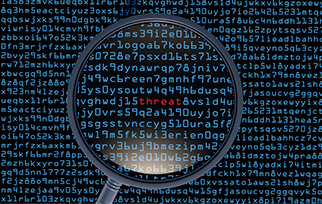The GRPR, as we know it today, has a long history. It started when the European Convention on Human Rights encompassed the right to privacy in 1950, affirming that "Everyone has the right to respect for his private and family life, his home and his correspondence."
Building upon this principle, the European Union (EU) has endeavored to safeguard this right through legislative measures. In 2011, a landmark case emerged when a Google user sued the company for scanning emails. These developments underscored the growing importance of safeguarding personal data and privacy.
Shortly after that, Europe's data protection authority emphasized the need for a comprehensive approach to personal data protection. This led to the drafting and eventual adoption of the General Data Protection Regulation (GDPR) in 2016, following approval by the European Parliament.
This is a brief history of GDPR; now, in this blog, we'll proceed to GRPR and its various aspects, including a step-by-step checklist for GDPR compliance.
What is GDPR?
The GDPR, or General Data Protection Regulation, is a regulation in EU law on data protection and privacy in the European Union (EU) and the European Economic Area (EEA). It also addresses the transfer of personal data outside the EU and EEA areas.
The GDPR has had a significant impact on organizations worldwide, as it applies to any organization that processes the personal data of individuals in the EU or EEA, regardless of the organization's location. It has increased awareness of data privacy rights and forced organizations to review their data protection practices.
GDPR software or GDPR compliance service providers such as Cybalt can help your organizations comply with the regulation.
What does GDPR Compliance Cover?
- Gives individuals the right to access, rectify, erase, and restrict the processing of their data. Individuals also have the right to data portability and object to automated decision-making.
- Organizations that process personal data must have a legal basis for doing so and implement appropriate technical and organizational measures to protect the data. They must also report data breaches to the supervisory authorities and, in some cases, to the individuals affected.
- GDPR data protection replaces the Data Protection Directive of 1995. It creates a single set of rules that apply to all organizations processing the personal data of individuals in the EU or EEA, regardless of where the organization is located.
- It covers organizations that must be transparent about using personal data and accountable for their data protection practices.
- Some organizations are required to appoint a DPO, who is responsible for overseeing data protection compliance.
- Right to erasure ("right to be forgotten "): Individuals have the right to request that their personal data be erased in certain circumstances.
Step-by-Step Guide for GDPR Compliance
1. Raise Awareness Among Staff And Other Stakeholders
GDPR compliance extends beyond upper management or the Data Protection Officer (DPO). Begin by engaging all employees in compliance efforts. Identify potential areas of non-compliance with the GDPR, such as through your company's risk register.
If they are not GDPR-compliant, it affects your compliance status. Take proactive steps to prompt them to work towards compliance, or consider changing your business partners. Implement measures to enhance physical security for devices carried by employees and within the office.
Control employee access to data to minimize vulnerabilities. Evaluate the GDPR compliance status of third-party suppliers and subcontractors. Furthermore, ensure that you have formal data processing agreements with third-party suppliers rather than relying solely on verbal or written confirmations.
2. Identify Your Legal Justification For Using Data
Establish a legitimate legal basis for processing personal data that must entail thoroughly evaluating and recording the lawful grounds upon which your organization relies to process such data.
You may consider obtaining explicit consent. By doing that, you fulfill contractual obligations, adhere to legal mandates, safeguard essential interests, and execute tasks in the public or an official capacity.
3. Maintain Documentation of Data Processing Procedures
By meticulously documenting data processing flows for every data element, you adhere to the accountability principle outlined in the general data protection regulation. Nevertheless, GDPR necessitates companies to demonstrate their compliance with data protection standards.
In cases where incorrect personal data has been shared with another entity, it is essential to promptly inform that entity so that corrective measures can be taken to rectify their records.
Consolidate this information into a comprehensive document and ensure regular updates to reflect current data management practices.
Record the following details:
- Identify the departments within your organization.
- Specify the types of personal data stored in each department.
- Designate individuals responsible for data processing within each department.
- Outline the procedures through which each department handles personal data.
4. Crafting a Privacy and Cookie Policy in accordance with GDPR
Robust privacy and cookie policy is a cornerstone for data and privacy, and maintaining transparency and trust with your users. It would help if you were prominently displayed and easily accessible on your website or application.

5. Outline Types of Personal Data and Purposes in Compliance with GDPR
GDPR guidelines state organization to outline policy, providing a transparent overview of the types of personal data collected from individuals and the specific purposes for which this data is processed.
- Identification Information
- Contact Information
- Demographic Information
- Financial Information
- Usage Data
- Preference Information:
- Health or Sensitive Information (if applicable)
6. Check Your Rights Concerning Individuals
Reviewing and updating your privacy and data protection procedures and policies is imperative to address the rights granted to individuals adequately.
Under GDPR, individuals are entitled to the following enhanced rights:
- Individuals have the right to request access to their personal information held by your organization.
- Individuals can request corrections to inaccurate or incomplete personal data.
- Individuals have the right to receive their personal data in a structured, commonly used, and machine-readable format and to transmit that data to another controller.
- Individuals can request the deletion of their personal data under certain circumstances, such as when it is no longer necessary for the purposes for which it was collected or processed.
- Individuals can object to processing their personal data, including for direct marketing purposes.
- UnderGDPR compliance, individuals can request the restriction of processing of their personal data under certain circumstances, such as when the accuracy of the data is contested or the processing is unlawful.
- Individuals have the right not to be subject to decisions based solely on automated processing, including profiling, which produces legal effects or similarly significantly affects them.
7. Existing Consent to Match with GDPR Compliance
In line with GDPR regulations, companies must regularly update their cookie consent banners with clear, straightforward, concise, and specific language.
By updating existing consent mechanisms to adhere to GDPR requirements, companies demonstrate their commitment to transparency, user privacy, and regulatory compliance. This proactive approach helps to build trust with users and mitigate the risk of non-compliance with data protection laws.
8. Critical components of an updated consent banner include:
- Ensure that the language used in the consent banner is easily understandable by all users, avoiding technical jargon or ambiguity.
- Clearly outline the types of cookies used, their purposes, and the entities that may access or process user data through these cookies.
- Provide users with a simple and accessible opt-out button for those who do not consent to cookie usage. This option should be prominently displayed and easy to use.
- Utilize automated cookie software to generate personalized consent banners tailored to your website or application, taking into account specific cookie settings and user preferences.
In addition to cookie consent banners, review any other methods to obtain consent for data processing activities. Ensure that these methods comply with general data protection regulations and seek fresh consent if necessary to address any gaps or deficiencies in compliance.
9. Protect Children's Data
Companies must consider implementing systems to verify the age of individuals and obtain parental or guardian consent when processing children's data.
This is particularly crucial in light of the GDPR's provisions to safeguard vulnerable data subjects, especially children, within commercial internet services such as social networking.
Critical considerations for protecting children's data under the GDPR compliance include
By implementing these measures, companies fulfill their obligations under the GDPR to protect children's data and ensure compliance with regulations governing the processing of personal data, thereby fostering a safer and more secure online environment for young users. If you want help complying with these rules, contact Cybalt- GDPR service provider.
10. Detect, Report, and Investigate Data Breaches
- Age Verification
- Parental/Guardian Consent
- Verifiable Consent
- Child-Friendly Communication
- Age Threshold
Companies must implement effective procedures to detect, report, and investigate personal data breaches in compliance with GDPR rules. Conducting a thorough GDPR assessment enables companies to identify the data types held and determine which breaches necessitate notification.
By implementing these procedures, companies effectively manage data breaches and mitigate individual rights and freedoms risks. They demonstrate accountability and transparency in compliance with GDPR. Additionally, utilizing GDPR software can streamline and automate the breach notification process, enhancing efficiency and accuracy in compliance efforts.
Implement robust monitoring systems and security measures to promptly detect any unauthorized access, disclosure, or loss of personal data. Review access logs, security alerts, and incident reports to identify potential breaches.
Unlocking GDPR Compliance: Your Essential Guide to Data Control and Privacy Protection with Cybalt
Achieving GDPR compliance for data control requires a comprehensive approach encompassing awareness, documentation, legal justification, and proactive measures to protect individuals' rights and data privacy.
By following the step-by-step checklist outlined in this blog and reaching out to GDPR services from Cybalt, organizations can navigate the complexities of GDPR effectively.
Schedule a free consultation call with our team to get started. Partnering with GDPR compliance service providers like Cybalt can offer invaluable support and expertise in meeting regulatory requirements.
Other Blogs

From Nuclear Centrifuges To Machine Shops: Securing IoT
IoT or ‘the internet of things’ has been around for a lot longer than the buzzword
Read More


Demystifying XDR
As the capabilities of threat actors have increased so have the tools which we utilize to detect and respond to their activities.
Read More


Cybersecurity In A Post Pandemic World
As many cyber security practitioners will tell you, the most imminent and dangerous threat to any network are the employees accessing it.
Read More


